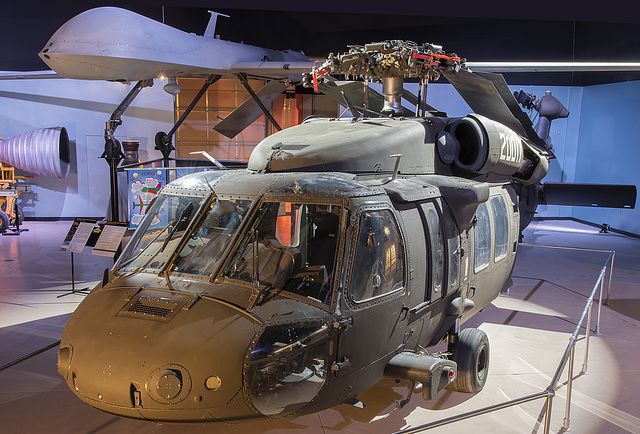How the UH 60 Revolutionized Helicopter Design for Military and Civilian Uses
Wiki Article
Everything You Need to Understand About the UH 60 Helicopter
The UH-60 helicopter, a foundation of U.S. Army aviation considering that its launching in 1979, represents an exceptional mix of engineering and operational convenience. As military needs progress, so also does the helicopter, with ongoing developments intended at enhancing its abilities and incorporating contemporary innovations.Background of the UH-60
Created in the late 1970s, the UH-60 Black Hawk helicopter emerged as a reaction to the united state Military's demand for a functional energy helicopter that can perform a variety of missions under challenging conditions. The impetus for its design was the drawbacks determined in the earlier helicopters used during the Vietnam War, especially in terms of speed, ability to move, and survivability.The Black Hawk was created by Sikorsky Aircraft, including innovative modern technologies and materials to enhance its performance and longevity. It was formally introduced into service in 1979, rapidly becoming a vital possession for armed forces procedures - uh 60. Its capability to carry troops, medical discharge, and logistical support in both combat and humanitarian missions made the Black Hawk a vital element of the U.S. Military's air travel fleet
Throughout the decades, the UH-60 has been continually upgraded, adapting to the altering nature of warfare and the advancing demands of contemporary military procedures. Its operational background includes involvement in significant disputes, peacekeeping missions, and calamity relief initiatives, solidifying its reputation as a reliable and reliable helicopter in numerous settings worldwide.

Style and Specifications
The style of the UH-60 Black Hawk helicopter regularly reflects a commitment to functional effectiveness and versatility. Created by Sikorsky Aircraft, this medium-lift energy helicopter includes a smooth, wind resistant body that improves rate and ability to move. Its tandem rotor system, identified by two counter-rotating blades, decreases vibration and raises lift capability, permitting safer operations in varied environments.The UH-60 is powered by 2 T700-GE-701C turboshaft engines, providing a maximum speed of around 180 knots and a series of around 400 nautical miles. Its robust airframe is constructed from advanced composite materials, making sure durability while maintaining a fairly low weight. The helicopter has a maximum gross weight of about 22,000 extra pounds, sustaining a functional haul configuration.

Duties and Missions
A versatile system, the UH-60 Black Hawk helicopter offers a wide variety of duties and missions within armed forces procedures. Designed primarily for army transport, it can lugging as much as 11 soldiers, making it an important asset for fast implementation and logistical support.Along with army transportation, the UH-60 succeeds in medical emptying (MEDEVAC) goals, furnished with sophisticated clinical tools to supply essential treatment during transit. Its capacity to run in diverse settings boosts its efficiency in battle search and rescue (CSAR) operations, where quick removal of personnel is essential.
The helicopter likewise plays a substantial function in reconnaissance and surveillance missions, making use of onboard sensing units and devices to debrief. Its convenience prolongs to logistical support, capable of delivering products and equipment to onward running bases.
In fight procedures, the UH-60 can be furnished with numerous weapon systems, allowing it to provide close air support. Its multi-role capacity makes the Black Hawk a crucial device for modern-day military forces, adapting flawlessly to the progressing needs of combat zone circumstances and making sure goal success throughout a series of functional contexts.
Performance and Capacities
Recognized for its durable performance, the UH-60 Black Hawk helicopter flaunts remarkable abilities that enhance its functional efficiency across different missions. uh 60. This multi-role airplane is furnished with powerful twin-engine Turbomeca Arriel 1D1 engines, giving phenomenal rate and maneuverability, with an optimum cruise rate of roughly 150 knots and a functional variety of around 400 nautical miles
The Black Hawk's innovative avionics and fly-by-wire control systems considerably enhance flight security and handling, allowing it to run in diverse settings, including damaging climate condition. Its adaptability is further exemplified by its ability to lug as much as 11 completely equipped troops or a haul of approximately 8,000 pounds, making it excellent for troop transportation, medical evacuation, and logistical assistance objectives.
In Addition, the UH-60 is developed for survivability, featuring enhanced airframes, ballistic security for staff and guests, and advanced countermeasure systems to avert risks. The helicopter's dexterity and speed, integrated with its ability for rapid implementation, why not find out more make it an essential possession in contemporary military operations, making sure that it remains a crucial component of tactical air assistance and battlefield movement.
Future Advancement

One significant emphasis is the combination of innovative avionics systems, which will certainly improve situational understanding via improved navigation and interaction abilities. This consists of the possible use of synthetic intelligence to assist pilots in decision-making and objective preparation.
Moreover, future variations may integrate sophisticated materials and style attributes to bolster the helicopter's sturdiness and minimize its radar signature, boosting survivability in opposed environments.
The intro of hybrid-electric propulsion systems is likewise on the perspective, aiming to enhance gas effectiveness and lower logistical burdens. Such improvements could prolong functional array and reduce the helicopter's environmental impact.

Verdict
The UH-60 helicopter stands for a considerable advancement in army aviation considering that its intro in 1979. The UH-60's withstanding visibility underscores its essential role in modern-day military operations and highlights Learn More the recurring evolution of armed forces aeronautics technology.The UH-60 helicopter, a foundation of United state Army air travel because its debut in 1979, stands for an impressive mix of engineering and operational convenience. As armed forces demands advance, so also does the helicopter, with recurring improvements aimed at enhancing its capabilities and incorporating modern technologies.The design of the UH-60 Black Hawk helicopter continually shows a dedication to functional efficiency and versatility. Established by Sikorsky Aircraft, this medium-lift energy helicopter features a streamlined, aerodynamic body that boosts rate and maneuverability.The UH-60 helicopter represents a significant development in armed forces air travel since its intro in 1979.
Report this wiki page